While many ‘Westerners’ know the fact that Cambodia is polytheistic, rather than monotheistic, they rarely understand the broader implications of this when it comes to fundamental differences between their own worldview and the Cambodian worldview.

In terms of spiritual belief and practice Cambodia is far removed from countries that are majority Christian, Muslim, or secular (each of which establishes an exclusive ‘truth’). Instead Cambodia is much more similar what you can read about in the Old Testament and the Book of Acts.
Let me share a concrete example of this… In 2020, we were looking to move to a smaller house and we visited one that was for rent in a nearby neighborhood. While we were there, I noticed that there was a Bible on the table and I asked the Landlord if he was Christian. He answered no and then proceeded to show us a copy of the Quran, an Ancestor shrine, a Taoist shrine, Yon protection spells by the entrances, various lucky plants positioned around the house, the sturdy locks on the doors, and the full array of security cameras. He then told us that even though he lived in another part of Phnom Penh he still came regularly to make offerings at the local Buddhist pagoda and to the local divinities. So, he concluded, we could rest assure that this house was secure – he’d covered all of the physical and spiritual bases. We decided to move to our current house instead, which came with none of the shrines, spells, or lucky plants.
In Cambodia, traditional religious practice is focused on function, not establishing exclusive truth. Buddhist practices are believed to accumulate positive karma, improving one’s condition in this life and in future reincarnations. But Cambodians fluidly turn to other religious practices to solve their daily problems by appeasing capricious local spirits and divinities, seeking blessings from deities, engaging the services of warlocks, and making offerings to their ancestor’s ghosts so that they will be blessed by them rather than cursed.
The fundamental religious conflict is not actually Christianity vs. Buddhism, but rather Monotheism vs. Polytheism. Many Cambodians have no issue with Jesus being added to the pantheon of religious practice. Going to Church, reading the Bible, and praying for the forgiveness of sin are generally acceptable new religious practices. Religious conflict erupts when Christians, Muslims, or Atheists stop observing other traditional religious practices – especially Buddhism, Ancestor Worship, and honoring the King as a Bodhisattva. This is the primary reason why it’s difficult to definitively answer the question, “How many Christians are in Cambodia?“
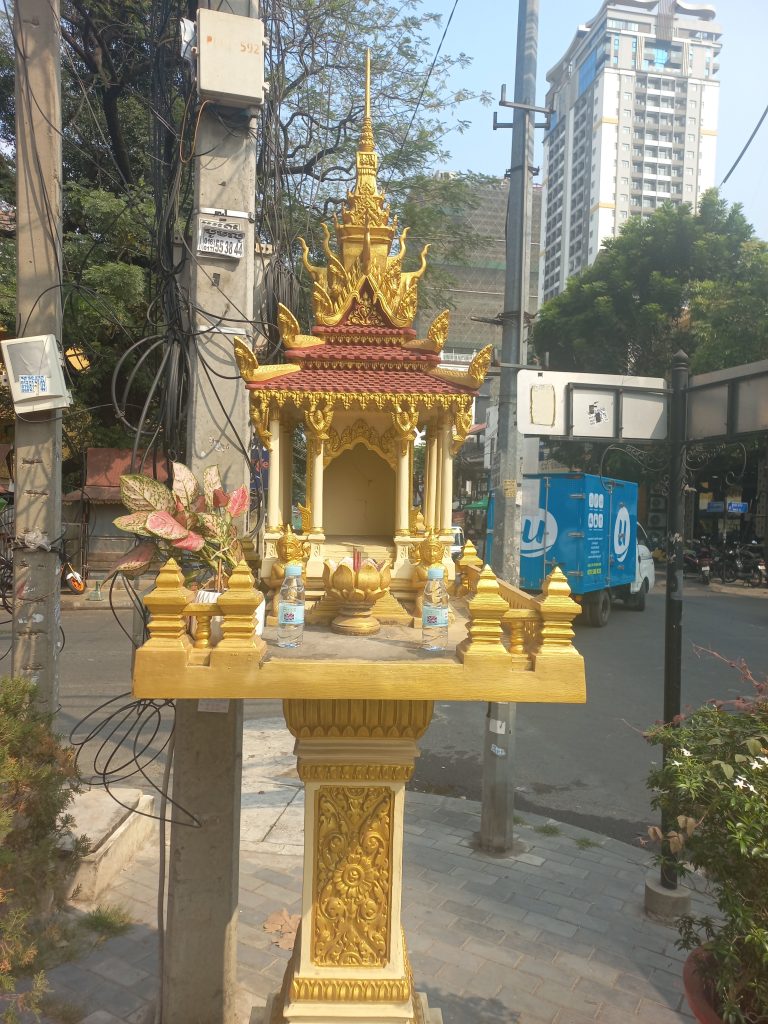
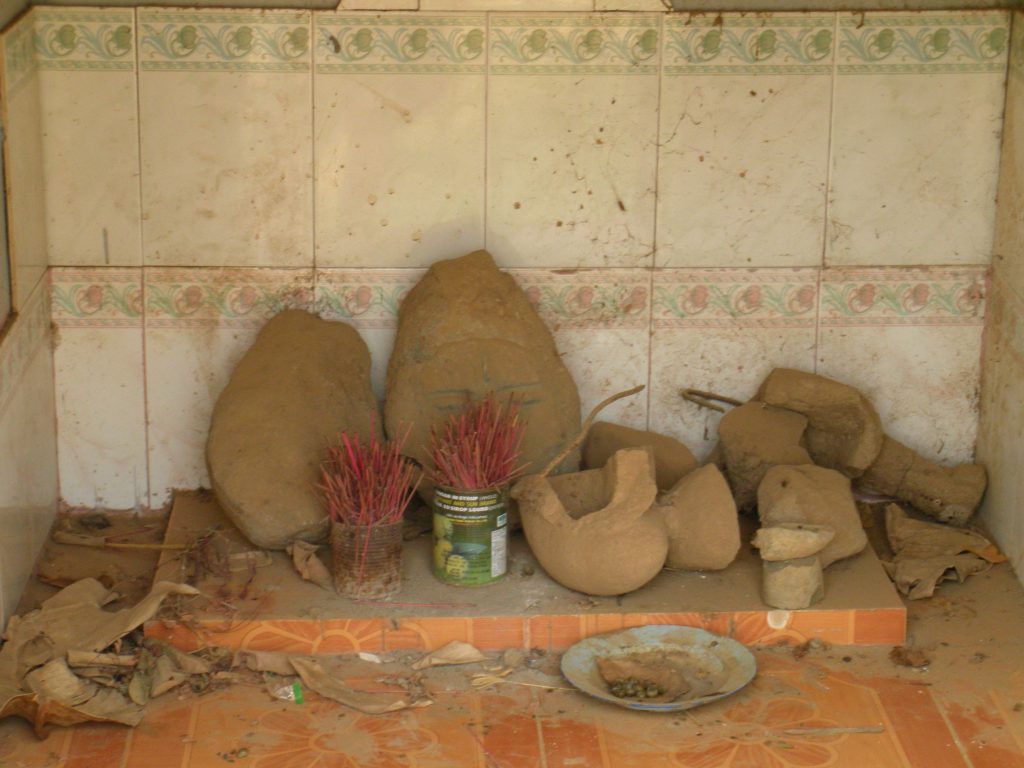

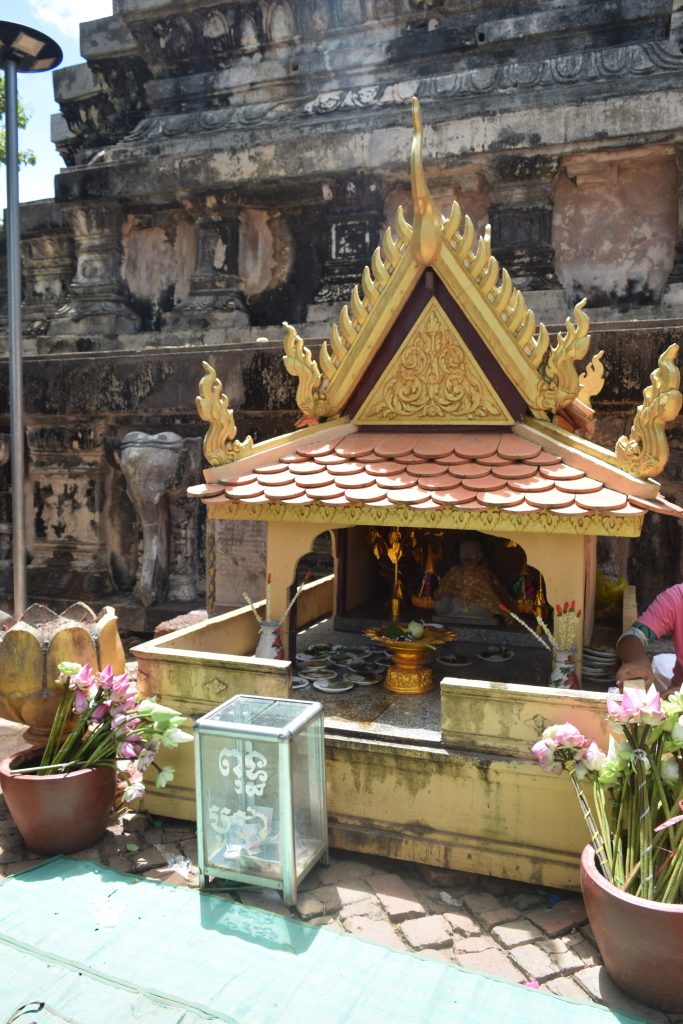
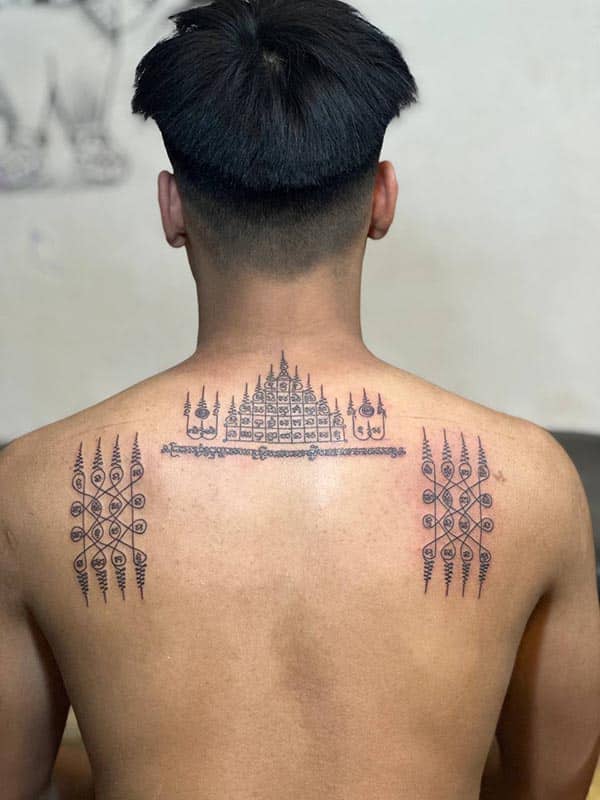
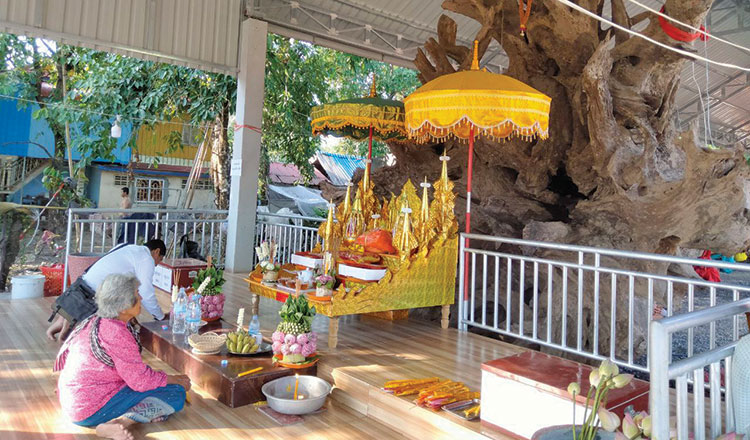
Theravada Buddhism is officially recognized as the national religion and that 97.1% of Cambodians self-identified as Buddhism as their primary religion. In practice, Buddhism is accompanied by aspects of Hinduism, Brahmin/Vedic, Animism, Taoism, Ancestor Worship, and many other belief systems.
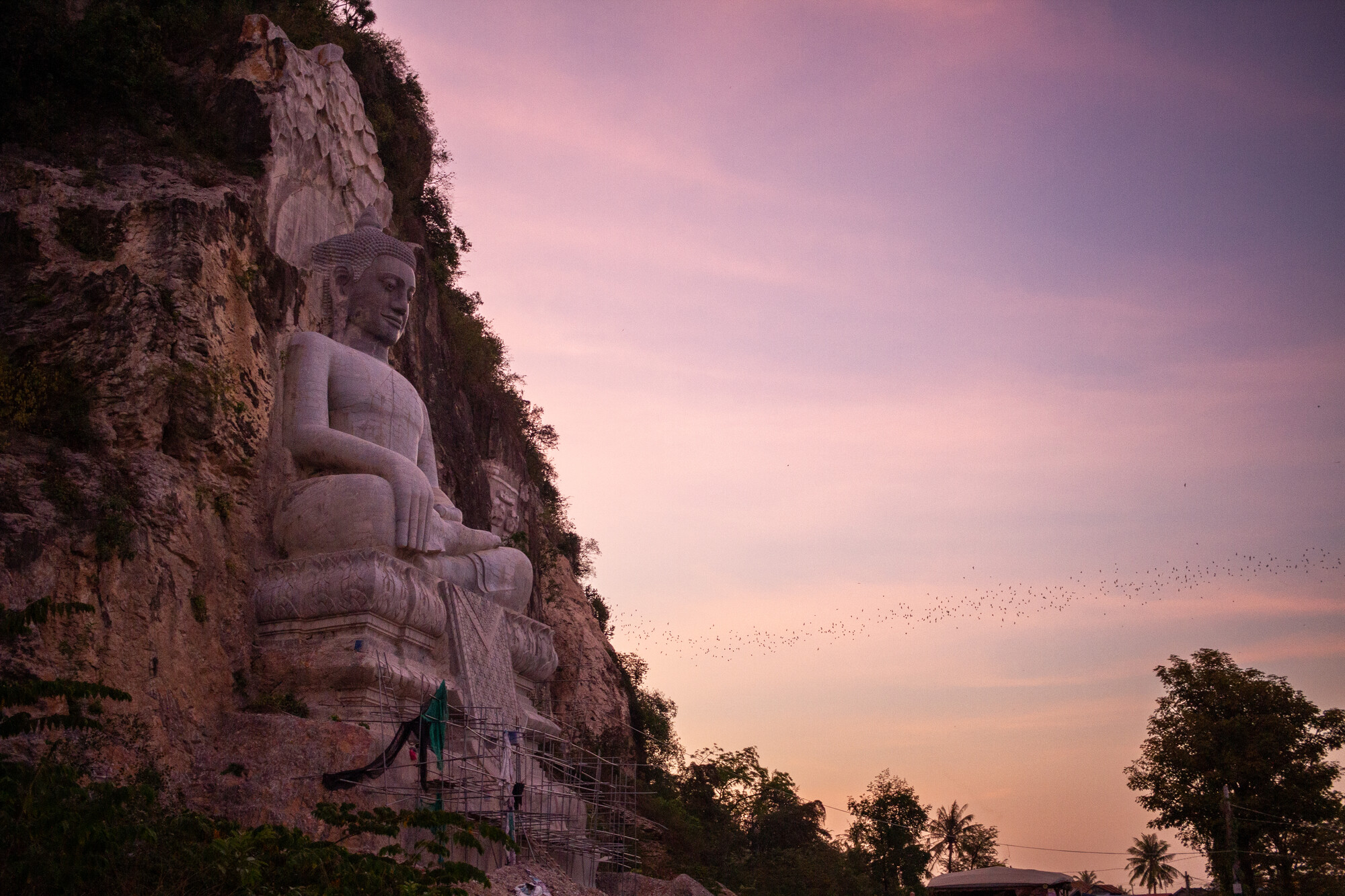
As the dominant spiritual practice in Cambodia, Buddhism provides the polytheistic framework that most other spiritual practices fit into. It is seen as securing the best outcomes for the next life in the cycle of reincarnation by offering ways for believers to manage their karma. The Cambodian King is considered to be a Bodhisattva and is the head of Cambodian Buddhism; there is no separation of church and state.
However, Buddhism is not considered to be the best spiritual practice for securing outcomes related to day-to-day life. Addressing those day-to-day concerns is primarily why Cambodians turn to other spiritual practices. As a 2019 research paper on Brahminism in Cambodia is titled, “We will never get rich if we follow Buddhism.“
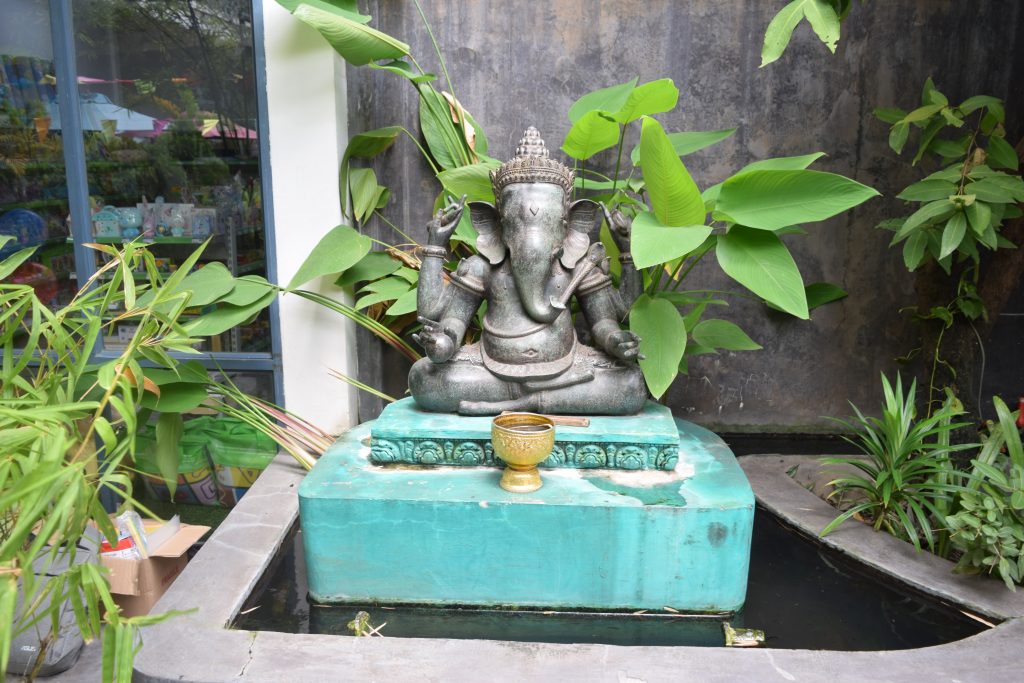
Brahmin/Vedic beliefs are an ancient predecessor to Hinduism that arrived in Southeast Asia from India millennium ago which have persisted in some form to the present even after Hinduism and Buddhism arrived.
Brahmin/Vedic beliefs and Hinduism have always had a close association to Buddhism in Cambodia, similar to the connection between Christianity and Judaism. Brahmin/Vedic beliefs and Hinduism are the “Old Testament” of Buddhism.
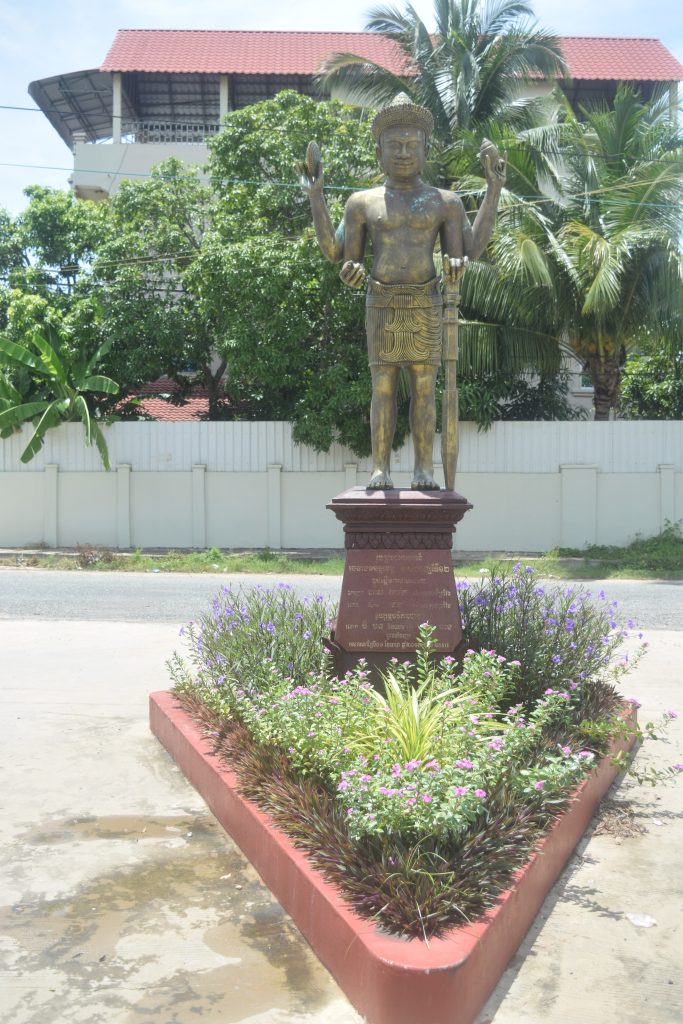
It is common to see Hindu deities, divinities, and entities featured in pagodas, homes, and public spaces. Some of these are objects of worship where offerings are made to these deities. It’s not always clear to outsiders why offerings are made to some Hindu statues or edifices, but not to others.
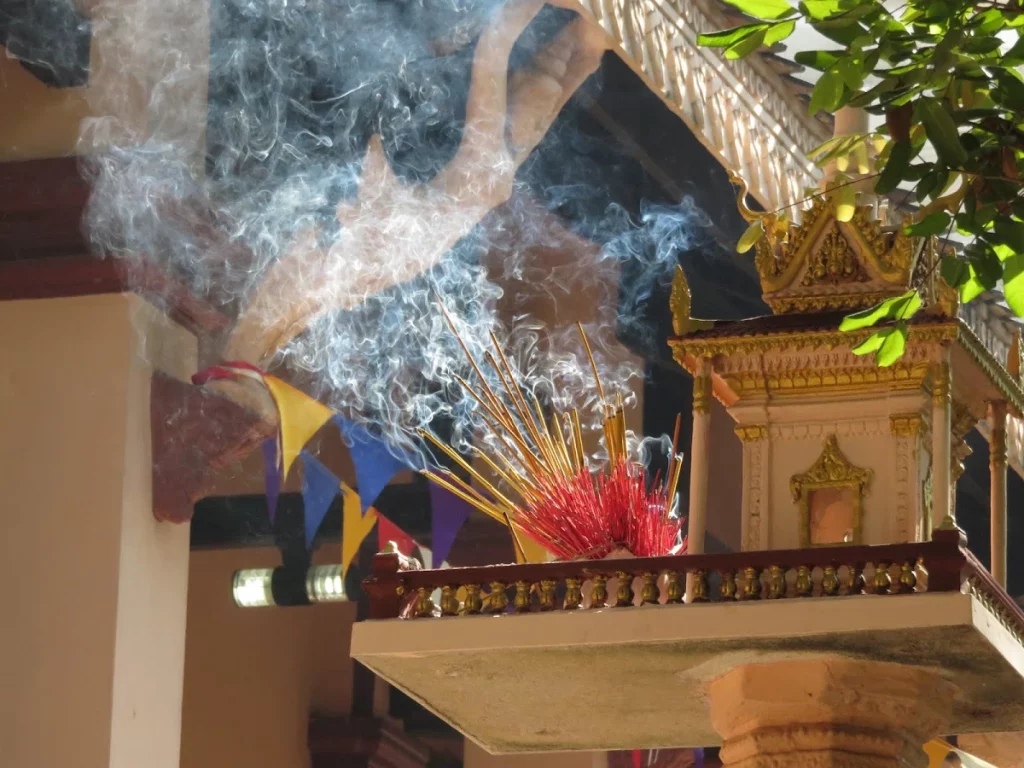
Ancestor worship is one of the oldest religious practices in Cambodia. Prior to Buddhism, ancestor worship was primarily focused on appeasing the angry or evil ghosts of ancestors. This is because only troubled ancestors would linger as ghosts or be punished in Naraka. Buddhism introduced practices that let living family members earn karma for their ancestors and broadened the practice of ancestor worship. Spiritual practices to honor or appease ghosts are primarily conducted at the pagoda where they are interred and at each home’s ancestor shrine.
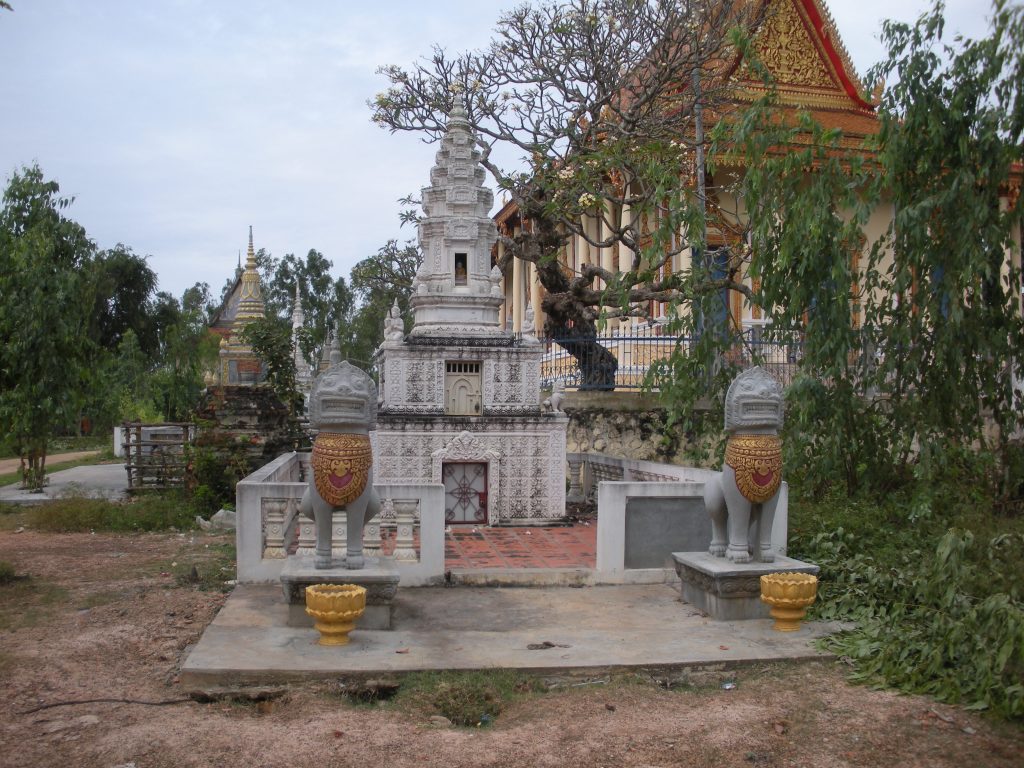
Buddhists are cremated and enshrined in stupas on pagoda grounds. On certain holy days and especially during the Pchum Benh holiday, Buddhists travel to pagodas to honor their ancestors – blessing their good ancestors and appeasing their evil ancestors.
The belief in Neak Ta – a fusion of Animism and Ancestor Worship – is particularly popular across Cambodia. Neak Ta are often based on historical figures, local geography (mountains, trees, lakes, etc), relics (statue fragments, cornerstones from ancient temples, etc), or a fusion of the three. The geographic feature would usually set the Neak Ta’s area of influence.
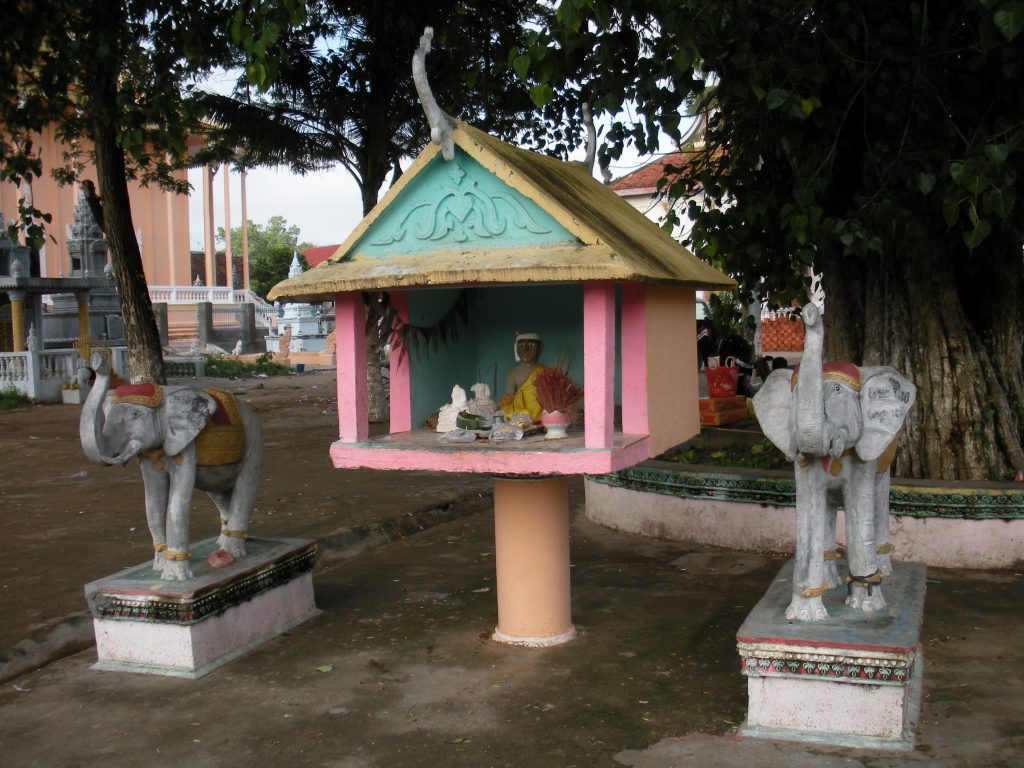
There are many Neak Ta who are believed to hold power over their lake, forest, mountain, neighborhood, village, or so on.
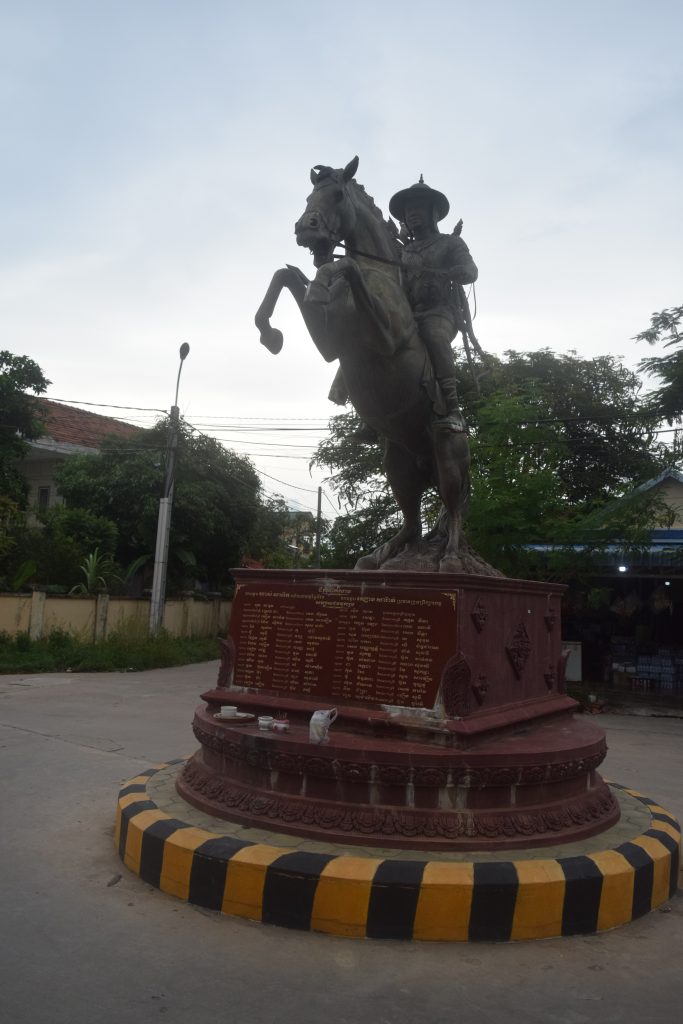
In Cambodia, the difference between a statue and an idol is based solely on whether or not offerings are made to it. There are many statues in Prey Veng province that were just statues when I lived there but which have become objects of worship with places for offerings being added.
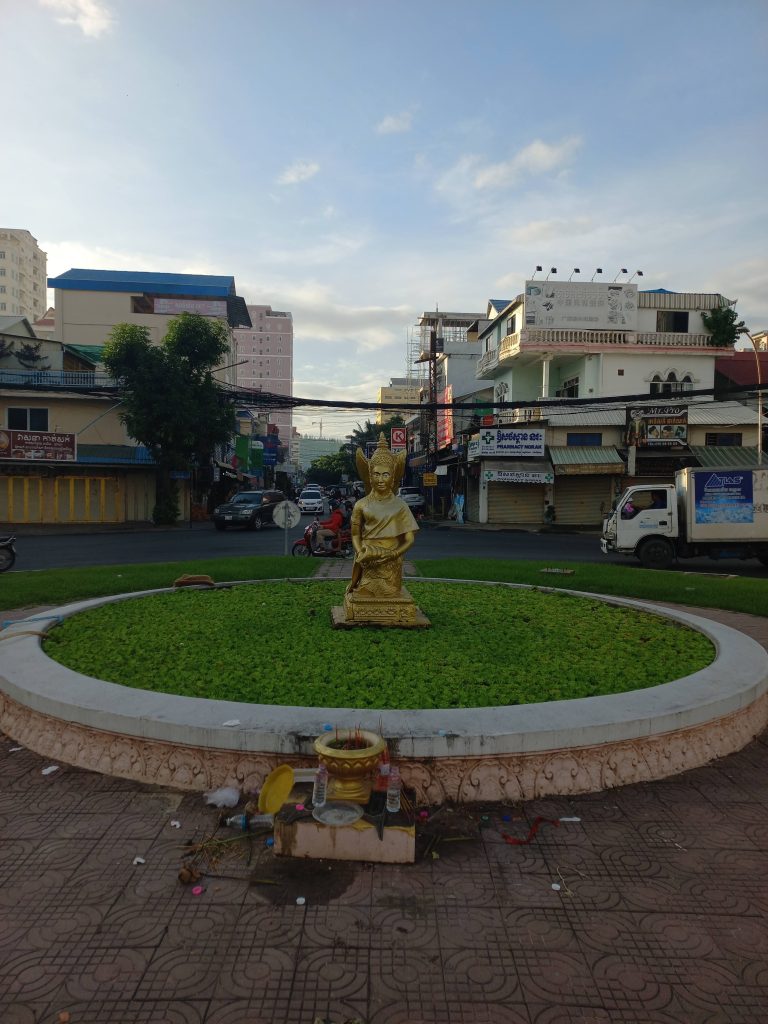
The most notable landmark near the Mennonite Central Committee office in Phnom Penh is what we usually call the Mermaid Circle. This statue may have originally been a monument to Suvannamaccha but it has since come to be considered a local divinity.
There are also regional Neak Ta, such as Lok Yeay Mao, who are believed to have influence over a much larger stretch of terrain. Yeay Mao is believed to hold influence over Bokor Mountain and the Cambodian coast below it.
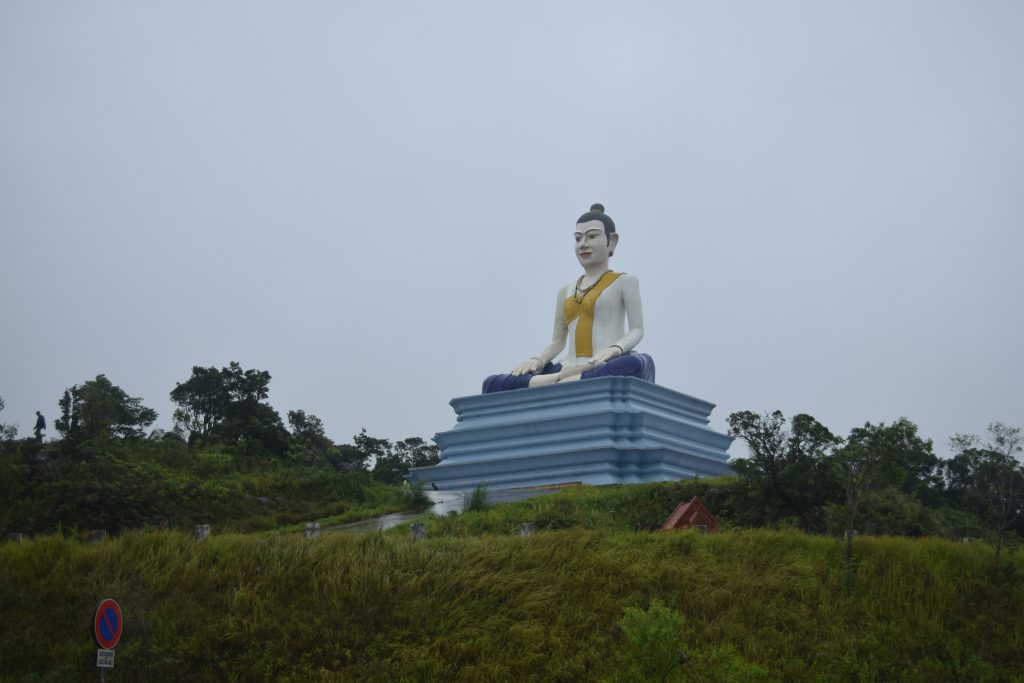
There are two origin myths for Lok Yeay Mao. The first is that she was a historical figure, a beautiful lady married to a powerful warrior. When he was killed, she took control of his army and defeated the Siamese. The other is that she was a grandmother who was abandoned by her husband and devoured by a tiger. In either case, she was believed to become a mountain spirit watching over the coast who would curse anyone who failed to pay respect to her. Over time locals came to believe that she was more benevolent, protecting Cambodians who paid tribute to her.
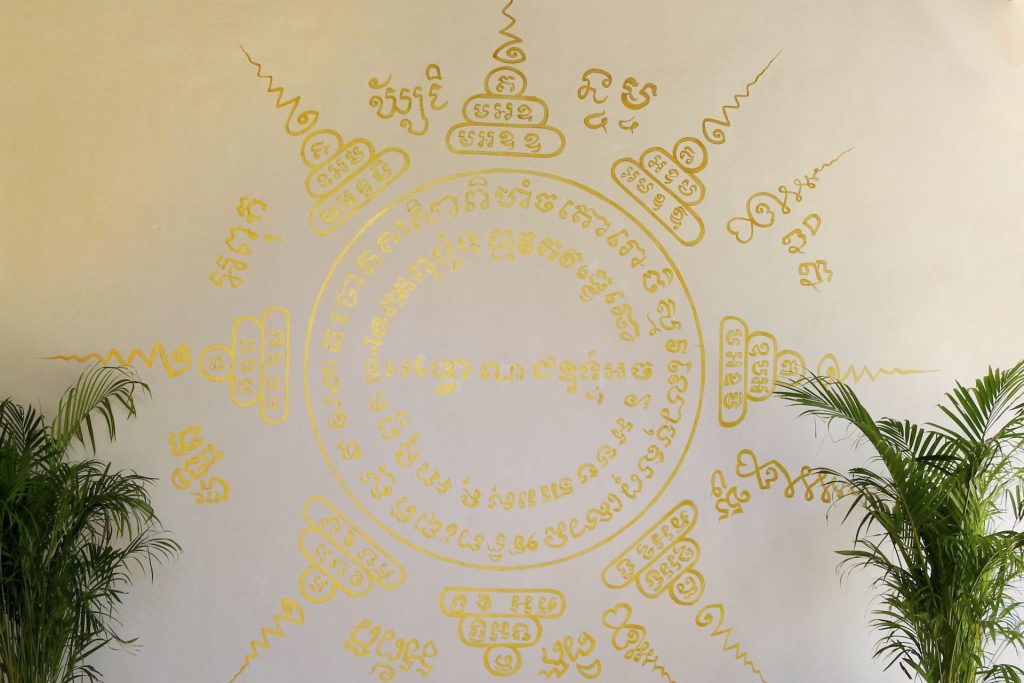
Belief in soothsayers, spirit mediums, and warlocks is common in Cambodia. I don’t know much about the individual practices – which vary from practitioner to practitioner – but the practice is widespread especially in rural areas.
“Sometimes there are cases in which mothers hire black magicians against their children,” he said. “Sometimes their children want to get revenge and they hire against their mother, or their family in-laws, their own siblings, too.”
Murder and Black Magic: Cambodian Witch Hunts, GLOBE_
The most visible signs of these practices are the use of Yon spells and Sak Yant tattoos. I shared in another post how there’s a longstanding practice of soothsayers telling Cambodian parents that birth defects are signs of spiritual disfavor and that infants with disabilities must be killed to advert misfortune.
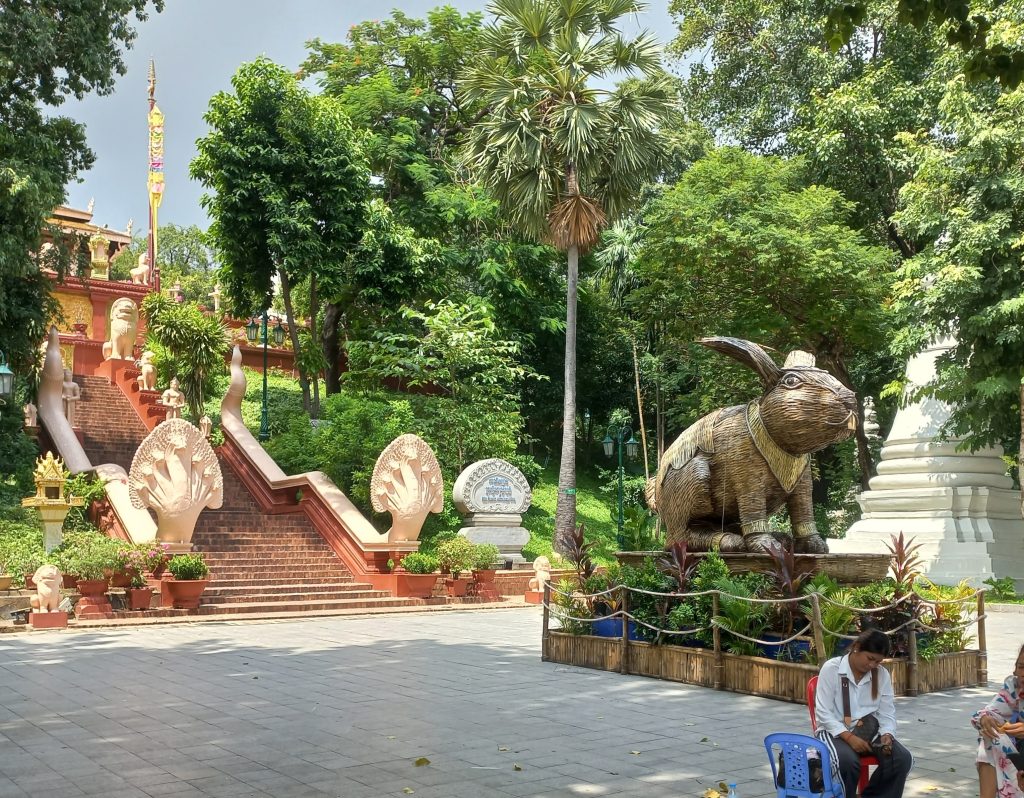
The Cambodian Zodiac is another common form of spiritual practice. The 12 animals are not generally considered deities, divinities, or spirits themselves…but many pagodas feature statues or effigies to these animals – which sometimes include spaces for offerings.
As I shared in my post on 5 Khmer Words that get a bit lost in translation, the concept of luck has spiritual connotations and is taken far more seriously in Cambodia than in United States.
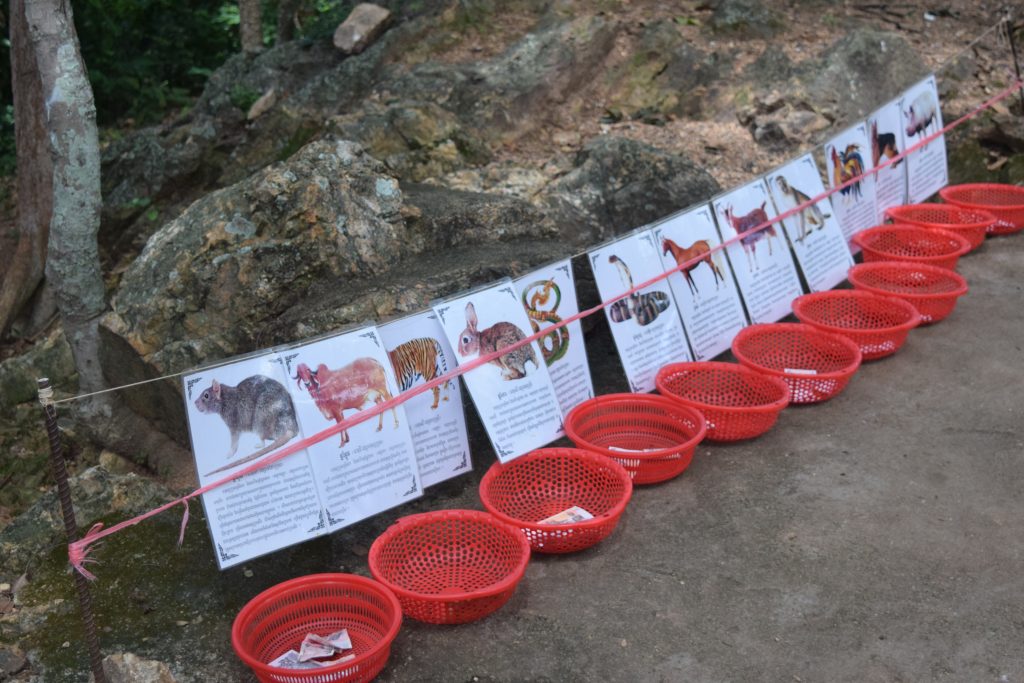
Making an offering to your zodiac animal is seen as lucky but these are not generally considered to be deities, divinities, or spirits.
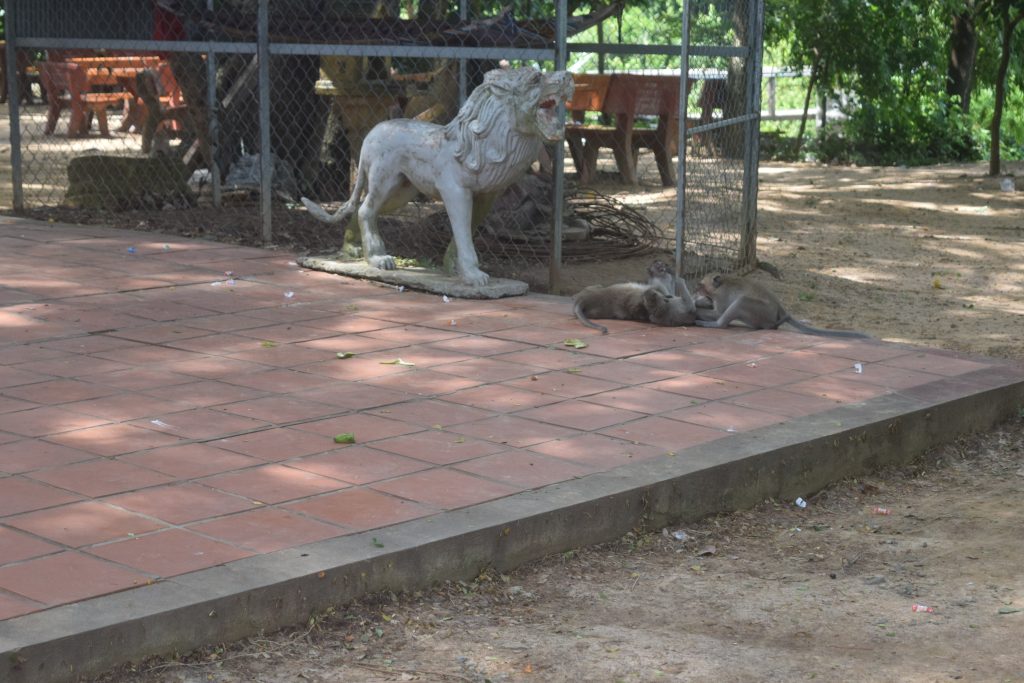
Dual statues are often placed on each side of entryways to ward against spirits, spiteful ghosts, and misfortune in Cambodia. These can often be found placed at houses, pagodas, stupas, and places of business. They are also sometimes placed on driveways, streets, parking lots, or at the entrance to a village. The most common are Lions and Naga, but I’ve seen others like Tigers, Elephants, Dogs, and Bears. The strangest one that I’ve seen is a house with dual Duck statues around the entrance one neighborhood north of us in Phnom Penh. I don’t know the background of why they selected Ducks but I would guess that it was considered a lucky animal by the family, was recommended by a soothsayer, or was part of the Braham/Vedic ceremony blessing the construction.
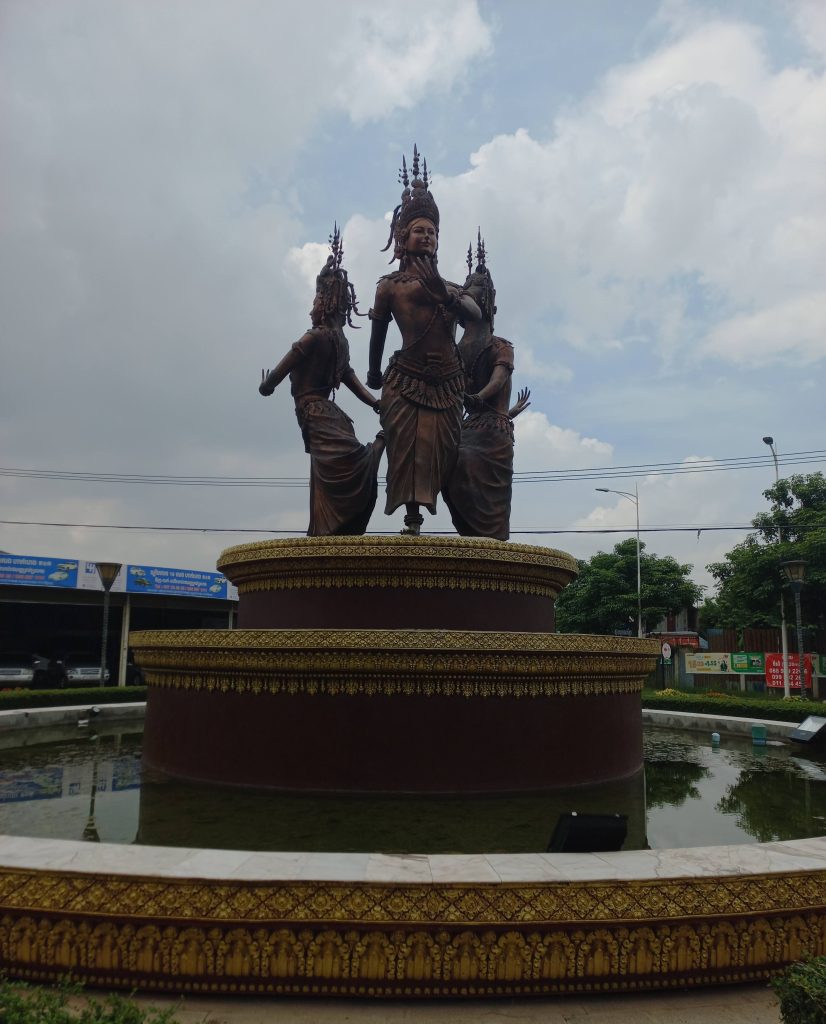
Across Cambodia you can see religious imagery, such as Apsara dancers and Naga, that are not objects of worship. Though, in other cases, very similar objects are objects of worship. The reasons why one statue is just a statue and one statue is a Neak Ta are often decided by the local community.
So that’s an introduction to religious and spiritual practice in Cambodia. I could write more – there are so many local practices, divinities, and spirits – but I hope that this provides enough of an overview.
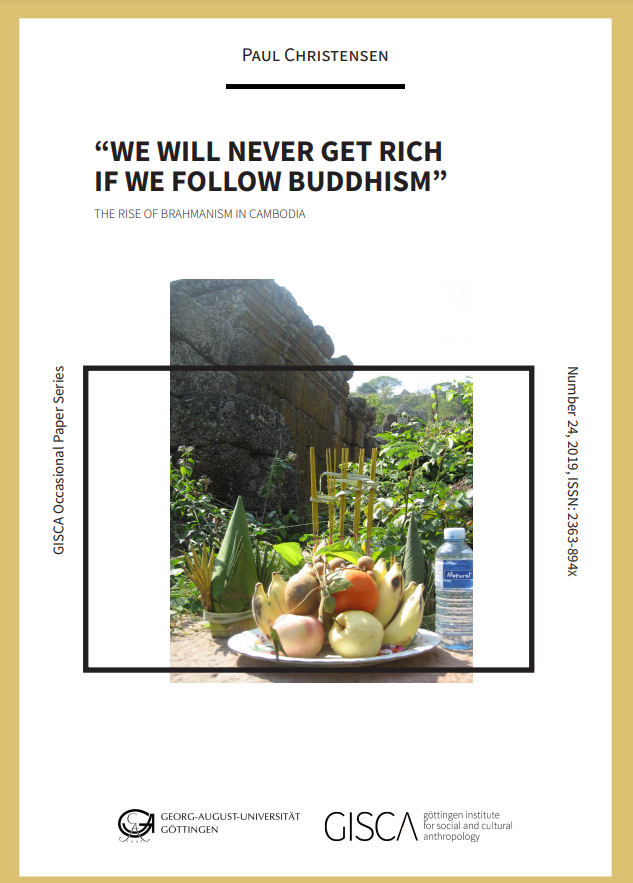
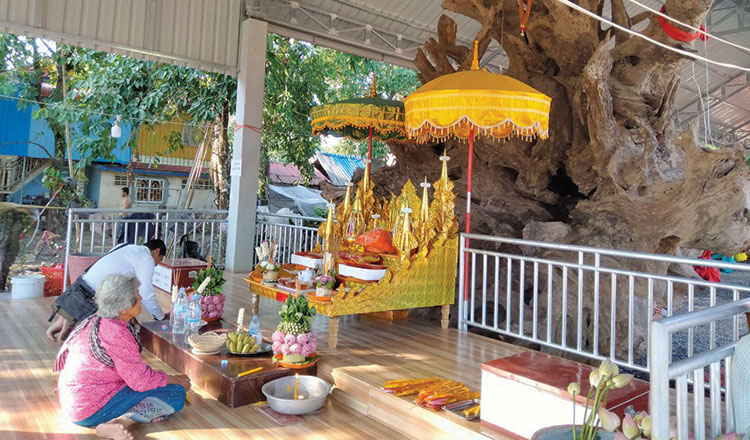
Yup, that sounds right. We practical down to earth Mennonites never learned how to deal with negative (or positive) spiritual forces till we were missionaries. We pray for you and wisdom as you live and work in such a society. Thank you for your sharing. It’s a bit overwhelming.